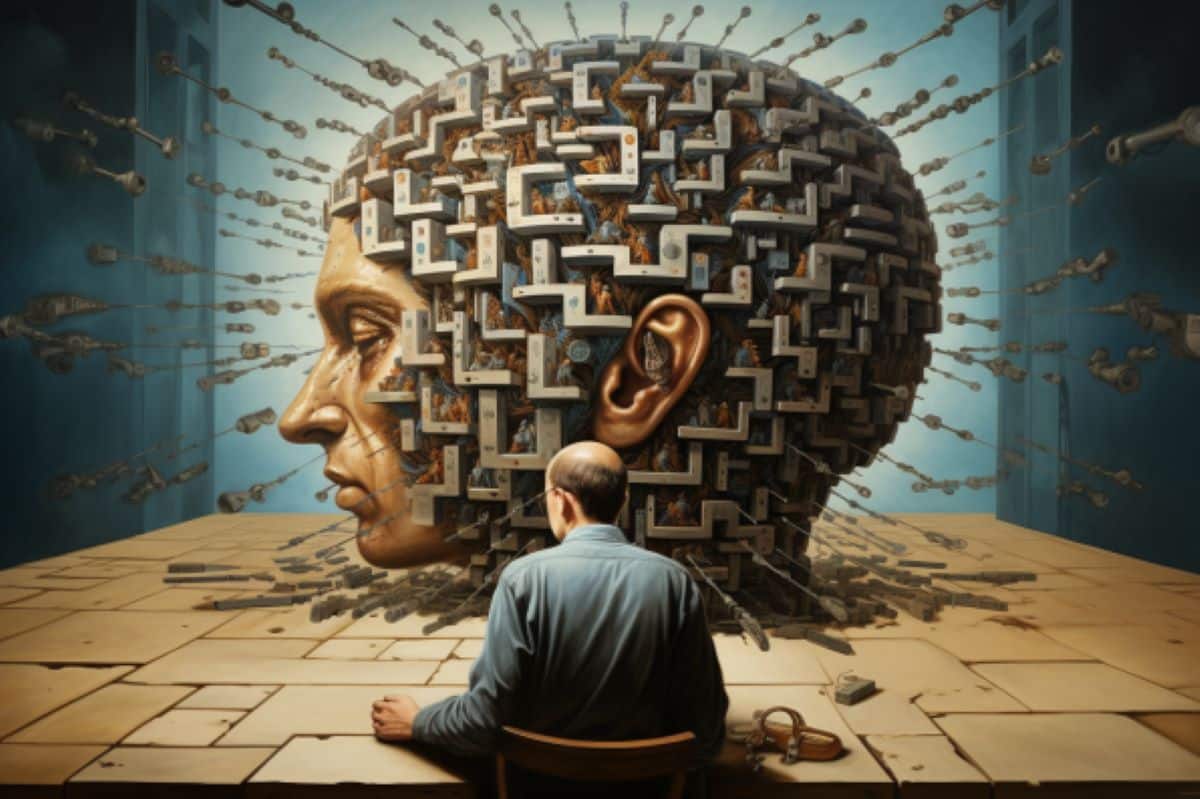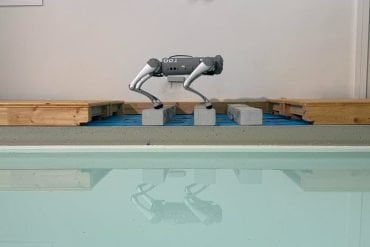Summary: New research unveils a probable unique human ability to recognize and remember sequential information. Despite being our closest relatives, bonobos struggle to learn the order of stimuli in the same manner as humans.
This discovery contributes to understanding the cognitive distinctions between humans and other animals, explaining why only humans possess certain cultural abilities like language and advanced planning. This sequential memory might be the foundational block behind many uniquely human behaviors and capabilities.
Key Facts:
- The study reveals that bonobos, our closest relatives, cannot effectively remember the order of visual stimuli as humans can.
- Previous research has hinted that the ability to recognize and recall sequential data is uniquely human, critical for language and advanced planning.
- The research adds weight to the sequence memory-hypothesis, which postulates the evolution of this ability during human prehistory.
Source: Stockholm University
Remembering the order of information is central for a person when participating in conversations, planning everyday life, or undergoing an education. A new study, published in the scientific journal PLoS One, shows that this ability is probably human unique. Even the closest relatives of humans, such as bonobos, do not learn order in the same way.
“The study contributes another piece of the puzzle to the question of how the mental abilities of humans and other animals differ, and why only humans speak languages, plan space travel, and have learned to exploit the earth so efficiently that we now pose a serious threat to countless other life forms”, says Johan Lind, associate professor in ethology and deputy director at the Center for Cultural Evolution, Stockholm University. Since September also associate professor of ethology at Linköping University.
Already earlier research at Stockholm University has suggested that only humans have the ability to recognize and remember so-called sequential information, and that this ability is a fundamental building block underlying unique human cultural abilities.
But previously, this sequence memory-hypothesis has not been tested in humans’ closest relatives, the great apes. The new experiments now show that also bonobos, one of the great apes, struggle to learn the order of stimuli.
In the recently published book The Human Evolutionary Transition: From Animal Intelligence to Culture (Princeton University Press), ethologists Magnus Enquist and Johan Lind at Stockholm University, and Stefano Ghirlanda, researcher in psychology at Brooklyn College, New York, have launched a new theory for how humans became cultural beings. A central idea concerns the difference in how humans and other animals recognize and remember sequential information.
“We have previously analyzed a large number of studies that suggest that only humans recognize and remember sequential information faithfully. But, even though we analyzed data from a number of mammals and birds, including monkeys, there has been a lack of information from our closest relatives, the other great apes”, says Johan Lind.
In a series of experiments, memory abilities of bonobos and humans were tested by having them press computer screens to, among other things, learn to distinguish between short sequences, including pressing right if a yellow square comes before a blue square, or by pressing to the left of the blue square appears before the yellow square.
“The study shows that bonobos forget that they have seen a blue square already five to 10 seconds after it has disappeared from the screen, and that they have great difficulty learning to distinguish the sequences blue-square-before-yellow-square from yellow-square- before-blue-square, even though they have been trained for thousands of trials”, says Vera Vinken, associated with Stockholm University, now a PhD student in Great Britain at the Biosciences Institute, Newcastle University.
In contrast, the study shows that humans learned to distinguish the short sequences nearly immediately. However, it still remains to be shown exactly how our closest relatives can remember and use sequential information.
“We now know that our closest relatives do not share the same sequential mental abilities with humans. But even if the results indicate that their working memory works in principle in the same way as in rats and pigeons, no one has yet demonstrated this in practice”, says Magnus Enquist, professor emeritus and one of the founders of the Center for Cultural Evolution.
The new results provide further support for the sequence memory-hypothesis, that during human prehistory an ability to remember and process sequences evolved, a necessary mechanism for many uniquely human phenomena such as language, planning ability and sequential thinking.
About this memory research news
Author: Gunilla Nordin
Source: Stockholm University
Contact: Gunilla Nordin – Stockholm University
Image: The image is credited to Neuroscience News
Original Research: Open access.
“A test of memory for stimulus sequences in great apes” by Johan Lind et al. PLOS ONE
Abstract
A test of memory for stimulus sequences in great apes
Identifying cognitive capacities underlying the human evolutionary transition is challenging, and many hypotheses exist for what makes humans capable of, for example, producing and understanding language, preparing meals, and having culture on a grand scale.
Instead of describing processes whereby information is processed, recent studies have suggested that there are key differences between humans and other animals in how information is recognized and remembered.
Such constraints may act as a bottleneck for subsequent information processing and behavior, proving important for understanding differences between humans and other animals.
We briefly discuss different sequential aspects of cognition and behavior and the importance of distinguishing between simultaneous and sequential input, and conclude that explicit tests on non-human great apes have been lacking.
Here, we test the memory for stimulus sequences-hypothesis by carrying out three tests on bonobos and one test on humans. Our results show that bonobos’ general working memory decays rapidly and that they fail to learn the difference between the order of two stimuli even after more than 2,000 trials, corroborating earlier findings in other animals.
However, as expected, humans solve the same sequence discrimination almost immediately. The explicit test on whether bonobos represent stimulus sequences as an unstructured collection of memory traces was not informative as no differences were found between responses to the different probe tests.
However, overall, this first empirical study of sequence discrimination on non-human great apes supports the idea that non-human animals, including the closest relatives to humans, lack a memory for stimulus sequences.
This may be an ability that sets humans apart from other animals and could be one reason behind the origin of human culture.








